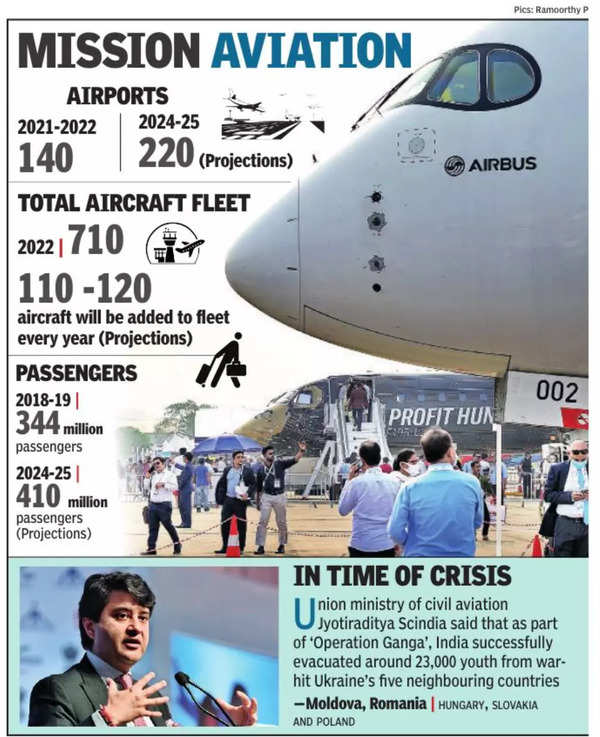From UPSC perspective, the following things are important :
Prelims level: Directorate General of Civil Aviation (DGCA)
Mains level: Implement stringent safety reporting and accountability measures in the Indian aviation industry.

Central Idea:
The article discusses the recent aviation accident at Tokyo’s Haneda airport involving a Japan Airlines (JAL) Airbus A350 and a Japanese Coast Guard Bombardier Dash 8. It highlights the disciplined evacuation and professionalism displayed by JAL’s crew, contrasting it with incidents where passengers’ lack of discipline during emergencies led to safety concerns. The author also points out flaws in training and safety reporting within the Indian aviation industry, focusing on a recent hard landing incident involving an Air India Airbus.
Key Highlights:
- The Tokyo aviation accident as an example of Murphy’s law.
- Disciplined evacuation by JAL crew saved lives.
- Comparison with incidents of passenger indiscipline during emergencies.
- Flaws in reporting and handling safety incidents in Indian aviation.
- The importance of crew training and adherence to safety procedures.
Key Challenges:
- Lack of discipline among passengers during emergencies.
- Flaws in training and safety reporting within the Indian aviation industry.
- History of covering up serious incidents and accidents in Air India.
- Need for proactive action and accountability in the face of safety concerns.

Key Terms:
- Notice to airmen (NOTAM)
- Aviation Safety Adviser
- Directorate General of Civil Aviation (DGCA)
- Simulator proficiency check
- Emergency evacuation procedures
- Hard landing
- Aircraft type conversion
Key Phrases:
- “If there is a possibility of several things going wrong, the one that will cause the most damage will be the one to go wrong.”
- “High professional standards in JAL’s training of its crew.”
- “A disturbing fact is the failure of the Air India management to act proactively.”
- “The hard landing accident at Dubai should serve as a wake-up call for the airline.”
Key Quotes:
- “The world witnessed the highest quality of discipline and crew training.”
- “Many questions will be raised, and we will not have any reasonable answers.”
- “Merely stating that safety is paramount when so many incidents are being swept under the carpet will not improve the reputation of the airline.”
Key Statements:
- The disciplined evacuation from the JAL aircraft showcased the importance of crew training and adherence to safety procedures.
- Flaws in training and safety reporting in the Indian aviation industry, especially in incidents like the hard landing at Dubai, raise concerns about passenger safety.
Key Examples and References:
- Tokyo aviation accident involving JAL Airbus A350 and Coast Guard Dash 8.
- Air France flight AF 358 overshooting runway incident.
- Emirates flight EK 521 crash incident with passenger indiscipline.
- Air India’s history of covering up incidents, including the recent hard landing at Dubai.
- Indian Airlines Airbus crash in Bangalore in 1990 and TAM Airlines Airbus crash in Sao Paulo in 2007.
Key Facts:
- All 379 passengers on the JAL plane in the Tokyo incident escaped, with five fatalities on the smaller aircraft.
- Aircraft manufacturers must demonstrate complete evacuation within 90 seconds in maximum density configuration.
- The hard landing by an Air India Airbus in Dubai involved a 3.5g impact, posing serious risks.
Critical Analysis:
The article critically examines the disciplined response of JAL’s crew in contrast to incidents of passenger indiscipline during emergencies. It sheds light on the flaws in training and safety reporting within the Indian aviation industry, emphasizing the need for accountability and proactive measures. The historical context of accidents caused by confusion in flying different aircraft types is highlighted, urging the industry to focus on standards and crew proficiency.
Way Forward:
- Implement stringent safety reporting and accountability measures in the Indian aviation industry.
- Emphasize crew training and adherence to safety procedures, learning from incidents like the Tokyo aviation accident.
- Ensure transparency in reporting and addressing safety concerns to improve the reputation of airlines.
- Evaluate crew selection criteria for new aircraft types, prioritizing proficiency and experience over seniority.
- Collaborate with international aviation standards to enhance overall safety in the industry.
Get an IAS/IPS ranker as your 1: 1 personal mentor for UPSC 2024
